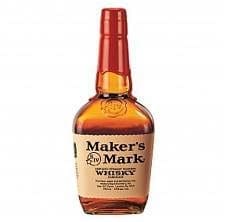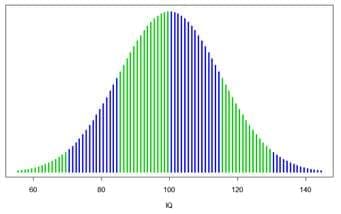Oct 4, 2021 | Fair Sentencing Act, Sixth Circuit
U.S. v. Hughes
In another confusing and unfortunate case involving the Fair Sentencing Act, the Sixth Circuit recently ruled against a man who had been convicted of possession with intent to distribute more than 50 grams of crack cocaine. The case of Albert Hughes shows how the FSA, which Congress designed to eliminate the racially motivated disparities between crack and powder cocaine drug crimes, has been applied haphazardly and is in serious need of clarification.
The case began back in 2009 when Hughes was originally given a mandatory minimum sentence of 10 years in prison for the crack offense and an additional five-year enhancement for possession of a firearm. For a variety of reasons Hughes’ case was overturned and subjected to resentencing several years later, a problem that led to the main issue of the case.
When Hughes was originally sentenced the FSA had not yet been passed. However, by the time he was resentenced in 2011, the FSA had been enacted. Hughes argued that because the new law had been enacted four months earlier, he should be sentenced according to the terms of the legislation. This would have a substantial impact on Hughes given that the new law included a five-year mandatory minimum for his crack possession charge as opposed to the original 10-year mandatory minimum.
The district court disagreed with Hughes and decided to sentence him to the 10-year mandatory minimum contained in the pre-FSA laws. The Court said that longstanding federal law is clear that a crime’s penalties are normally those on the books when the crime is committed.
Hughes then appealed the case to the Sixth Circuit, hoping to convince the Court to overturn the harsher sentencing in favor of the rules that were in place at the time he was sentenced in 2011. In an unusual twist, the government, which initially argued against Hughes’ request, actually switched its position and filed a brief supporting Hughes, saying that the Sixth Circuit should vacate the district court’s order and remand Hughes’ case for resentencing under the FSA. Rather than take this as an important signal to reconsider the case, the Sixth Circuit instead ordered a third party that had filed a brief supporting the district court’s opinion to argue the matter.
Unfortunately, the Sixth Circuit ultimately held that pre-FSA laws should apply to Hughes’ case. The Court found that the when a person is subject to resentencing, he or she must face those penalties that were in effect on the date of the previous sentencing. The Sixth Circuit panel said that it is not the Court’s job to correct the unjust sentencing scheme that existed prior to the passage of the FSA, but instead to follow the laws that were in place at the time a crime was committed.
To read the full opinion, click here.
Oct 1, 2021 | Business Law
Antitrust law
These are the laws designed to protect trade and commerce. The protection is aimed at monopolies, price discrimination, and price-fixing. The Antitrust Division of the Justice Department and the Federal Trade Commission are the agencies that investigate antitrust violations.
In 1890 Congress passed a federal statute, the Sherman Antitrust Act, the prohibits interference with the freely competitive interstate manufacturer and distribution of goods. This statute commonly referred to as the Sherman Act is the governing authority. Congress amended the act by the Clayton Act of 1914.
Another statute, Hart-Scott-Rodino Antitrust Improvement Act, passed in 1976 improves the Justice Department’s antitrust enforcement powers. This is the law that requires large companies to give the Federal Trade Commission and the Justice Department notice of intent to merge.

Sep 30, 2021 | Legal updates
With all the coverage surrounding the recent fiasco involving General Petraeus, the extent of people’s personal electronic security has been given increased attention. After all, if the CIA Director isn’t able to keep his emails private, what hope is there for the rest of us? Many privacy experts agree the recent scandal has shown just how vulnerable most people are in terms of the transparency of their digital communications.
The first thing that many experts say you need to realize is that no matter what you’re trying to hide, if it’s in your e-mail inbox it is possible that someone will find out. If the thing you’re hiding involves criminal activity, the chance of the government finding it goes up exponentially given their power to search and subpoena information. This doesn’t change whether the information is contained on your hard drive or floating up in the cloud.
One thing that Petraeus discovered was that the government can easily connect you to an account by using the IP address of the computer you used to access the account. This is what proved that he and his mistress were using the otherwise anonymous account. E-mail providers like Google and Yahoo save this kind of information for 18 months, during which time it can easily be subpoenaed.
Something many people may not realize is that the Fourth Amendment requires the authorities to get a warrant from a judge to search only physical property. Rules governing e-mail searches, however, are far more lax. Under the 1986 Electronic Communications Privacy Act, a 1986 law that Congress enacted to protect your privacy in electronic communications, a warrant is not required for e-mails six months old or older. Even if e-mails are more recent, the federal government needs a search warrant only for “unopened” e-mail. Everything else, including identifying information such as the IP address used to access the account requires only a subpoena.
One complicating factor is a recent rejection of the government’s approach by the Ninth Circuit Court of Appeals. The district happens to encompass many of the technology companies that handle e-mail messages and the servers that contain the data. Given the decision by the Ninth Circuit, the Department of Justice’s Manual now includes a note reminding agents in the area to get a warrant before accessing such information.
Though many people might believe this kind of e-mail surveillance only happens in high profile cases, the reality is that law enforcement throws a large net when looking for incriminating information. Google reported that United States law enforcement agencies requested data for 16,281 accounts from January to June of this year, and it complied in 90 percent of cases. Online users need to realize that everything is logged and recorded somewhere. If you don’t want someone else to find it, don’t say it.

Sep 29, 2021 | Civil Cases
With the New Year festivities to begin tomorrow night, a liquor trade mark case caught my attention. The Sixth Circuit Court of Appeals recently heard oral arguments involving Marker’s Mark and whether it can keep a trademark on its signature red wax seal. The company is seeking to enforce an injunction preventing any other liquor company from using a similar bottle top.
In 2010, Maker’s Mark won an order granting exclusive rights to the dripping red wax seal. At that time U.S. District Judge John G. Heyburn II in Louisville granted Maker’s Mark an injunction prohibiting any other company from using a similar seal and look. Heyburn justified the decision by saying the company had a valid trademark that ought to be enforced.
Brett Barrouquere reports that the 2010 decisions put an end to a nearly seven-year long ordeal between the owner of Marker’s Mark, Deerfield, Illinois-based Fortune Brands and London-based Diageo North America and Casa Cuervo of Mexico which use red wax seals on special bottles of Reserva tequila. Fortune’s former liquor business has since been spun off to a new company, Beam, Inc.
Maker’s Mark lead counsel Edward T. Colbert said the seal serves no purpose other than to make the bourbon bottles distinctive and that it isn’t required for the production or packaging of Cuervo liquor. Colbert, brother of Comedy Central comedian Stephen Colbert, says others may want to use the wax seal but have no need for it.
Attorneys for Diageo and Cuervo are instead arguing that use of a red wax seal in no way causes customer confusion. Buyers of tequila and bourbon are after different things and no one is confused about whether the two companies are affiliated with one another.
Judge Karen Nelson Moore took a different view, asking “Wouldn’t it be a logical assumption that the same company made the two products because of the red wax seal?” Cuervo attorney Michael Aschen responded that customers won’t be confused about Cuervo’s origins, saying “They’re not going to get confused and think it comes from Kentucky.”
Aschen noted that Maker’s Mark uses a square bottle with large, black letters on it and costs around $25, while Cuervo’s bottle is tall, cylindrical, bears the tequila’s logo and cost about $100. The only commonality is the red wax seal, Aschen said.
Cuervo began using the dripping wax seal on bottles in 1997 as part of an effort to brand Reserva tequila as a specialty product. The wax-dipped bottles entered in the U.S. market in 2001 in a limited production run of 3,000-to-4,000 bottles. The bottles remained on sale in the U.S. market for approximately three years.
Maker’s Mark sued over use of the seal in 2003, claiming it violated their long-standing trademark. Cuervo dropped the dripping wax seal six years ago.
Maker’s Mark spends about $22 million annually to market its bourbon, and sells about 800,000 cases annually. The ad campaigns focus heavily on the wax seal, occasionally mixing things up with a different color. Recently a blue seal was used as a promotion for a University of Kentucky charity drive.
Heyburn declined to award damages when deciding that the injunction would be put in place, saying Cuervo violated the trademark, but did not focus its marketing efforts on the red wax seal to the point of damaging Maker’s Mark’s brand.

Sep 28, 2021 | Supreme Court
The U.S. Supreme Court decided to hear a criminal case out of California so it can decide whether police are allowed to stop cars based solely on an anonymous tip. The Supreme Court agreed to hear oral arguments in the case and will issue its opinion before the end of the current term next June.
Current constitutional law concerning searches and seizures is clear that before a police officer can apprehend a driver they must first have reasonable suspicion of wrongdoing. To establish this reasonable suspicion, officers are allowed to rely on an identified witness’ description of illegal activity. The issue is that courts across the country are split on whether this permits officers to pull over a driver simply because an anonymous source reported that the person was driving recklessly.
The case at issue, Navarette v. California, dates back to August 2008 when a California Highway Patrol dispatcher received a call from a driver who reported being run off the road by a pickup truck traveling north along Highway 1. The caller was able to provide the license plate number of the truck and it was spotted a short time later by two police officers.
The officers who pulled over the driver claim that they smelled marijuana when they approach the truck and ultimately discovered four bags of pot in the truck bed. The driver, Lorenzo Navarette, tried to challenge the search of the car but ended up pleading guilty to transporting marijuana and was sentenced to 90 days behind bars.
The case was appealed to a federal district court, which eventually upheld Navarette’s conviction. The Court relied on a California Supreme Court case that said police are allowed to rely on anonymous tips without having to actually see the reckless driving themselves. The Court found that the tip from the other driver was sufficient evidence to justify the stop of Navarette’s vehicle without any direct corroboration on the part of the arresting officers.
The Supreme Court will now decide whether this court was correct in upholding the conviction. The last time the Supreme Court addressed the subject was in 2000 when it ruled unanimously that an anonymous tip that reported a man at a bus stop holding a gun did not permit officer to search someone who simply matched the man’s description. The Court held that anonymous reports can be unreliable or even malicious and thus cannot be used as the basis for probable cause. However, the opinion noted that the case might be different if the tip had involved a bomb or something else that was especially time sensitive. Whether the Court will decide that drunk drivers are similar to bombs remains to be seen.
Source:”U.S. justices agree to hear traffic stop case,” by Lawrence Hurley, published at (www.reuters.com).
See Our Related Blog Posts:
Supreme Court Issues Important Decision Regarding DNA Collection
Supreme Court Supports Defendants Seeking To Raise Ineffective Assistance Of Counsel Claims



